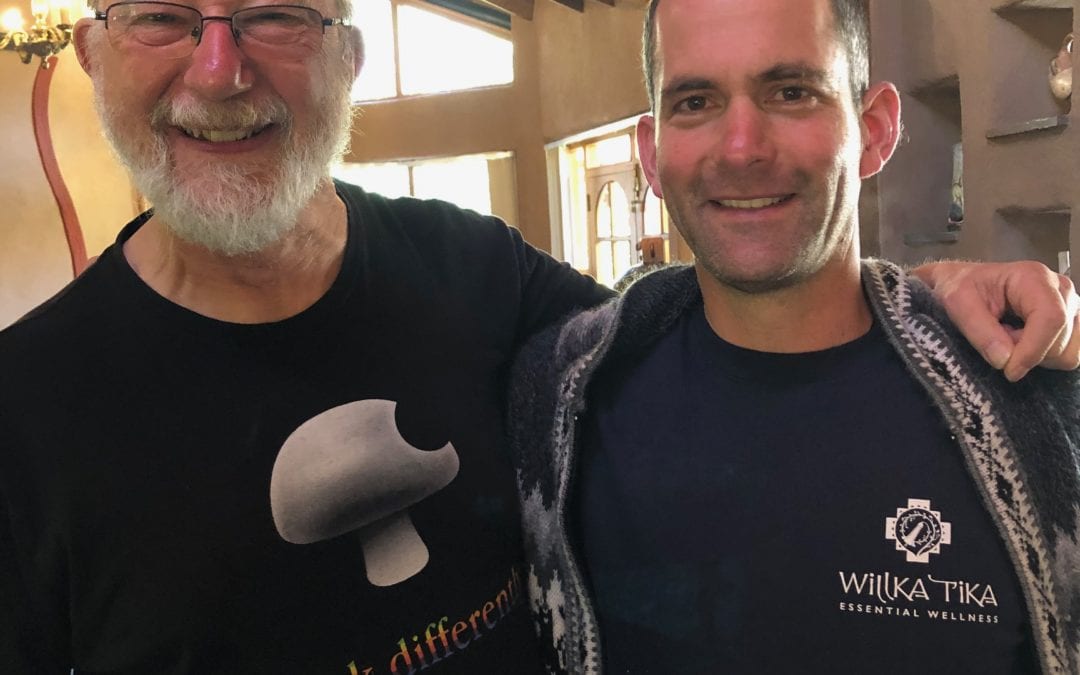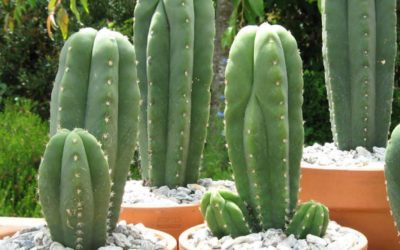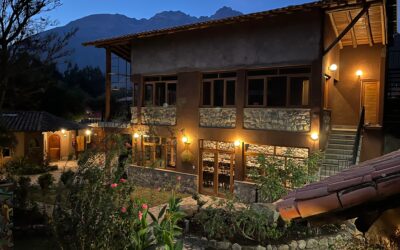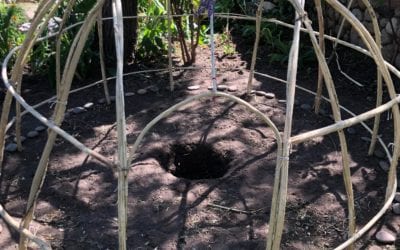Ayahuasca in the Andes?

Since we first started bringing groups to Peru in the 1980’s we’ve often been asked for advice from travelers curious about ayahuasca ceremonies in the Andes. Our views today are different than they were 30 years ago. Although the plant medicine may not have changed much over generations, pretty much everything else around it has.
Firstly, the incredible popularity and demand to experience ayahuasca is unlike anything we could have predicted when we first arrived in Peru. It is shocking to see ayahuasca featured in in-flight magazines, offered at bars in Cusco, and discussed in chat groups hosted by both spiritual and corporate leaders.
Secondly, ayahuasca has traveled outside of its native Amazon. In the old days, you used to have to travel for days to experience an ayahuasca ceremony. This usually involved several flights, a long boat ride, and a jungle hike just to sit in ceremony with a shaman. Now ayahuasca can be found in countries around the world and Amazonian shamans can be found all over Peru, if not abroad.
Thirdly, the research surrounding ayahuasca has expanded into the consciousness of academics, medical professionals, entrepreneurs, and journalists. There are now many ethnobotanical experts with scientific and practical knowledge to share. As such, there is powerful momentum around the globe to spread the knowledge and the practice of plant medicine.
These developments have brought wonderful gifts to many people but can also can be fraught with peril. We have always tried to keep an open mind with regards to ayahuasca and those who partake in it. Our assumption is that the vast majority of people pursue and partake in ayahuasca for noble reasons: they are searching for healing, personal growth, and a positive shift in consciousness. Humans are self-actualizing creatures and when people see an opportunity to move up our hierarchy of needs, they will move towards it. Those searching for health or enlightenment today may be just as sincere as the trailblazers of decades past. What’s different is that there are so many more seekers now. And as ayahuasca becomes more prevalent, it can be harder to define what an authentic experience should be.
That is why, with few exceptions, we very rarely recommend ayahuasca centers or shamans to our many guests who ask us. For us to feel comfortable making a recommendation, we would need in-depth knowledge of quite a few things, all which take considerable time and can change often.
1) Who runs the center? What are their objectives? Is this a profit-making operation or is it run by people who have dedicated their life to the healing arts? Or both? There are now dozens of ayahuasca centers in the Andes.
2) What is their track record? How many ceremonies have they done? What challenges have they faced and how have they handled them? Anyone who tells you they have never had to deal with a “bad experience” has not led that many ceremonies or may not be fully transparent.
3) What support structure do they have in place? When things do go wrong do they have medical and/or psychological support on hand? Is there a facilitator who can intervene if needed and provide the type of emotional support that a Westerner is likely to need? How do they help people integrate their experience afterwards?
4) Who are their shamans? Where do they come from and what is their lineage? Many shamans have been practicing plant medicine for generations although ayahuasca in the Andes is fairly recent. If they are traveling from the jungle, are they comfortable working in the new environment? Are they able to prepare their own medicine or is that being outsourced? How connected is the shaman with the setting and the people and vice-versa?
Clearly, this is not an exhaustive list and we do not pretend to be experts in this subject matter. There are MANY resources available for those searching for an in depth understanding of how to approach this powerful plant. We felt compelled to share our thoughts here because we are continuously contacted by guests asking for recommendations and by friends asking about what we have seen over the decades spent living in Peru. So for those who ask us, here are a few of the insights we have learned:
1) There is an enormous range of experiences with ayahuasca in the Andes and all over Peru. The medicine itself can take you in many possible directions and anyone who tells you what will or will not happen is doing you a disservice. You have to go in with an open mind while also being prepared to surrender and face things that you may not want to face.
2) Good shamans are hard to find and even harder to maintain. Taking a healer out of his or her community and bringing them away from home to do a ceremony can have limitations. The healer may not be as effective or as comfortable. Sometimes those who are very effective become “discovered” and possibly corrupted by western influences. They can lose the gifts which made them special in the first place. Most shamans will have a unique and very personal way or working and this may not lend itself to the group at hand. “Fit” takes a while to find and then it can be hard to maintain.
3) Everyone wants to tell you about their experience and most likely it will have little to do with yours. People are so moved by their experiences that they can’t help but share them. There are thousands of testimonials on-line telling you what you should do, where you should do it, and how it should be. Read them to acquaint yourself with the range of possibilities but don’t let them substitute for doing your own research and following your own intuition. One man who had read more books on ayahuasca than I could carry, did months of research and read hundreds of reviews. The first night of their first ceremony, he and his wife had such a negative experience that they left the plant medicine center where they were staying and went home.
4) Bad things do happen. It’s true that there have been a few fatalities in the Amazon and even the Andes “related” to ayahuasca, and this is partly why more people are feeling drawn to the relative safety and comfort of the Sacred Valley. However, even in the Sacred Valley we have heard of a couple tragedies, although the details are hard to discern. Some centers have overcompensated with extra support and others have played down the risks. Most of us who travel understand that risk is part of any new experience and we learn not to worry about every warning we hear. We traveled happily in Peru in the 1980’s when Sendero Luminoso was a real threat. But we knew not to go to certain places alone.
In summary, we hope that everyone who reads this finds the plant medicine experience that you need, and hopefully want. May you find healing, insight, and love. Just go forward with your mind and eyes open, be as informed as you can be, and don’t put too put too much credence on any one person’s viewpoint, including ours.
Post Script: For an inspiring and refreshing perspective on Plant Medicine Ceremonies, read our recent blog on Alexandre Tannous and Dennis McKenna (Dennis is in the photo above with Terry Cumes).
If you would like to book a plant medicine retreat with a very experienced, professional, and high integrity shaman, we recommend Samadi Healing.





Recent Comments